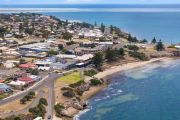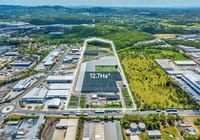
Majority of student accommodation in Australia now privately run: report
The majority of student accommodation in Australia is now provided by the private sector, a new report has revealed, with indications that there is plenty of growth to come.
JLL’s Australian Student Accommodation Market Review 2016, found that Australia is currently one of the leading countries in terms of exploiting the economic potential of international students – but that there is “significant potential”, still untapped, in the purpose-built student accommodation (PBSA) industry, particularly in the west-coast market.
After a period of stagnation, due to the high Australian dollar and private college shutdowns, JLL has documented a spike in overseas enrolments in 2015 that saw applications at record levels, at 363,450. The number of international student enrolments in Australia now exceeds the levels in Britain.
One reason for this, the report found, was the strength of some regional economies, such as India’s. The number of Indian students studying in Australia has grown at more than 20 per cent a year over the past two years. They now represent the second-largest market for overseas students, after China.
International students now count for a third of Australia’s university population, and private accommodation providers look to be capitalising on the resurgence in areas where the private sector has traditionally had little traction.

Private sector market penetration varies greatly between Australian cities, competing against University provided accommodation and residential accommodation. Source: JLL/Student Accommodation Database
The Adelaide market, for example, is showing signs of maturation with two major developments in progress.
The private company Urban Nest has a 689-bed development in North Terrace. This is its second development in the city, which is home to Flinders University, the University of South Australia, the University of Adelaide and the (private) Torrens University, as well as satellite campuses for other universities.
Accommodation provider Blue Sky has approval for a 542-bed facility on Waymouth Street, with two development sites currently being marketed on their potential for student accommodation.
The report found that Canberra also looks to be maturing on an already strong base – with a 500-bed project currently under construction and an 800-bed project in the pipeline, both driven by demand from the Australian National University.
The nation’s capital easily has the highest private sector accommodation penetration, at 31.4 per cent.
 State of Australia’s university cities: the private sector now accounts for the majority of student accommodation. Source: JLL
State of Australia’s university cities: the private sector now accounts for the majority of student accommodation. Source: JLL
Perth has been identified as the market with the greatest opportunity for developers of student accommodation – that city’s market is still dominated by university-owned accommodation, the report found.
There are approximately 1780 private-sector beds for 79,000 full-time students in the city, suggesting significant opportunity for future private sector expansion, according to JLL.
Those figures pale in comparison with the numbers on the east coast.
The country’s leading market is Melbourne – where the total size of the private student-accommodation market now exceeds Sydney’s.
There are 9648 privately provided student beds in Melbourne, more than the 9546 beds provided by universities in the city.
Victoria is also the leading state for overall international student enrolments, constituting 36 per cent of the national total.
In Brisbane, a market often cited as having an oversupply of residential units, JLL floats the possibility of some residential buildings being converted to student accommodation.
There are approximately 10,000 PBSA beds currently proposed for the Brisbane market.
Sydney has 17,662 student beds across both university provided accommodation and PBSA, with 51 per cent located in the CBD, or CBD fringe.
There are 2150 beds in the development pipeline, which is unlikely to address the current under supply of student accommodation, according to JLL, with the potential for rents to rise in the medium term.










